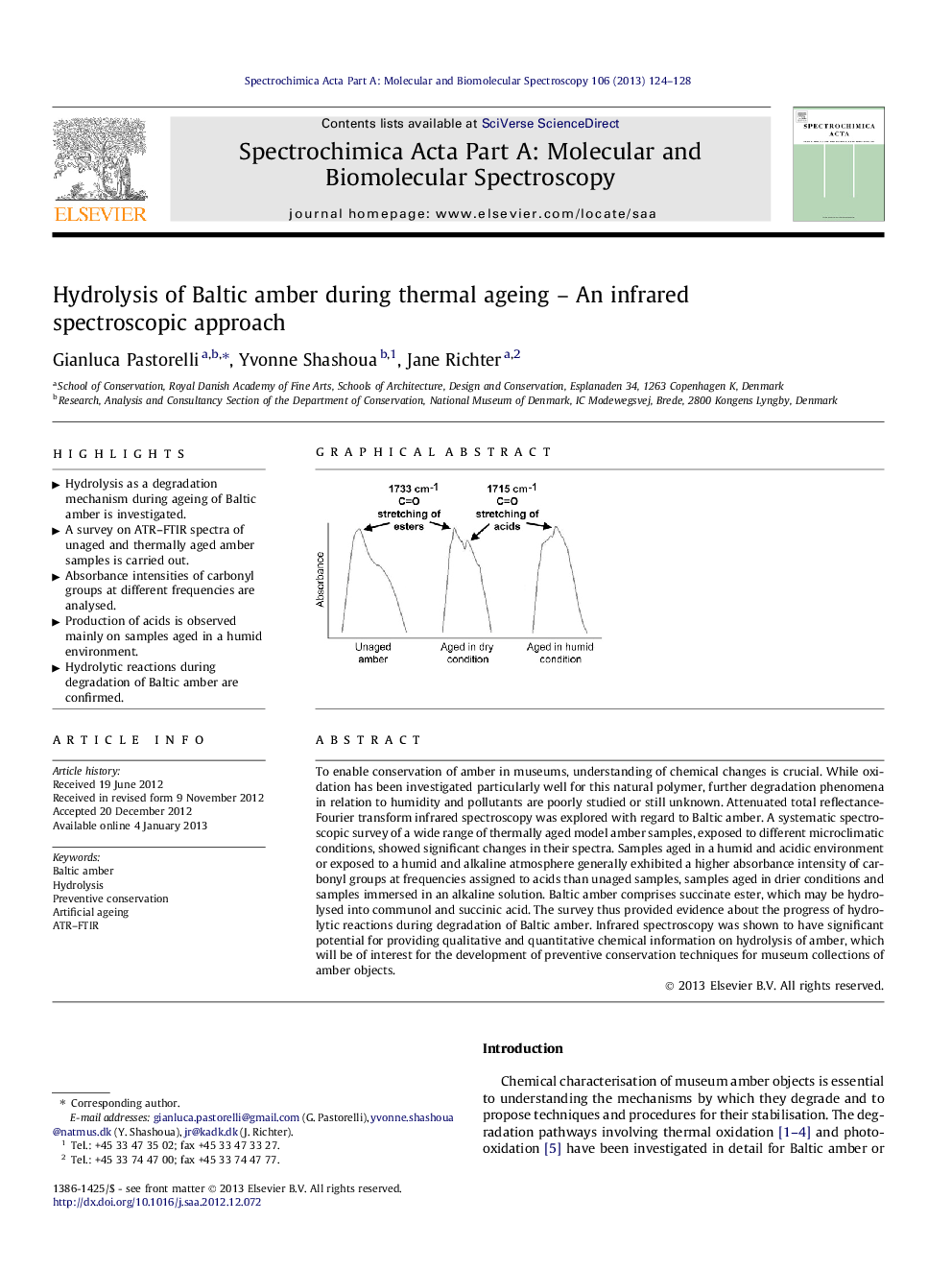| Article ID | Journal | Published Year | Pages | File Type |
|---|---|---|---|---|
| 1234104 | Spectrochimica Acta Part A: Molecular and Biomolecular Spectroscopy | 2013 | 5 Pages |
To enable conservation of amber in museums, understanding of chemical changes is crucial. While oxidation has been investigated particularly well for this natural polymer, further degradation phenomena in relation to humidity and pollutants are poorly studied or still unknown. Attenuated total reflectance-Fourier transform infrared spectroscopy was explored with regard to Baltic amber. A systematic spectroscopic survey of a wide range of thermally aged model amber samples, exposed to different microclimatic conditions, showed significant changes in their spectra. Samples aged in a humid and acidic environment or exposed to a humid and alkaline atmosphere generally exhibited a higher absorbance intensity of carbonyl groups at frequencies assigned to acids than unaged samples, samples aged in drier conditions and samples immersed in an alkaline solution. Baltic amber comprises succinate ester, which may be hydrolysed into communol and succinic acid. The survey thus provided evidence about the progress of hydrolytic reactions during degradation of Baltic amber. Infrared spectroscopy was shown to have significant potential for providing qualitative and quantitative chemical information on hydrolysis of amber, which will be of interest for the development of preventive conservation techniques for museum collections of amber objects.
Graphical abstractFigure optionsDownload full-size imageDownload as PowerPoint slideHighlights► Hydrolysis as a degradation mechanism during ageing of Baltic amber is investigated. ► A survey on ATR–FTIR spectra of unaged and thermally aged amber samples is carried out. ► Absorbance intensities of carbonyl groups at different frequencies are analysed. ► Production of acids is observed mainly on samples aged in a humid environment. ► Hydrolytic reactions during degradation of Baltic amber are confirmed.
